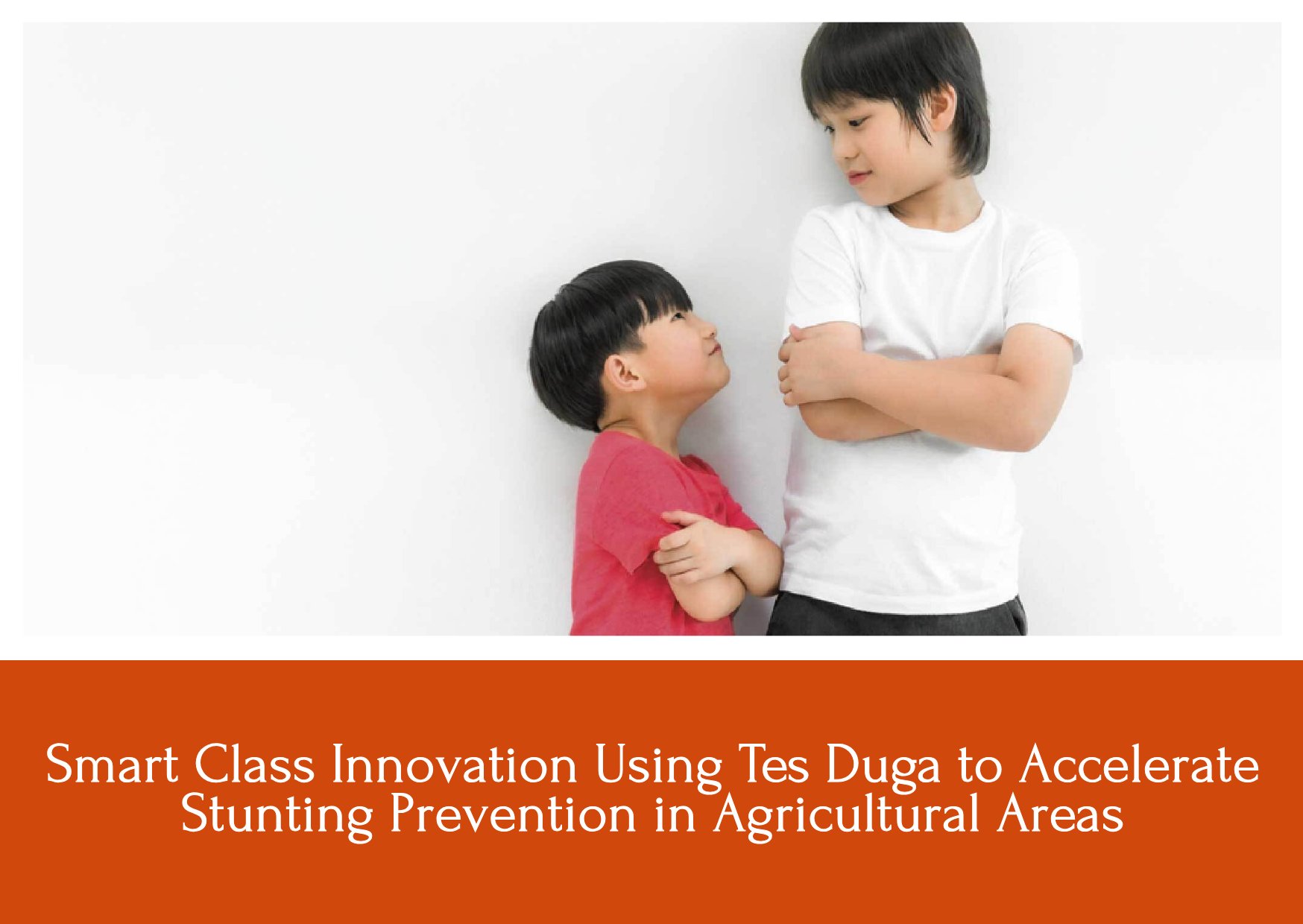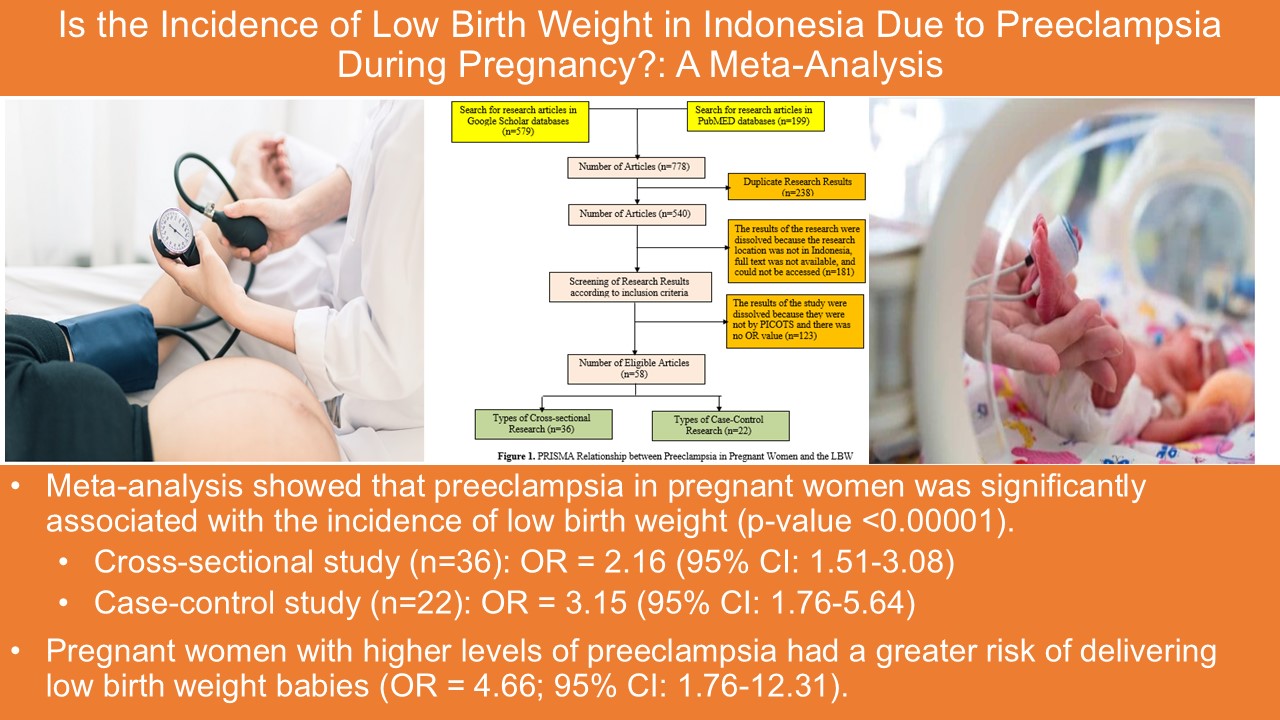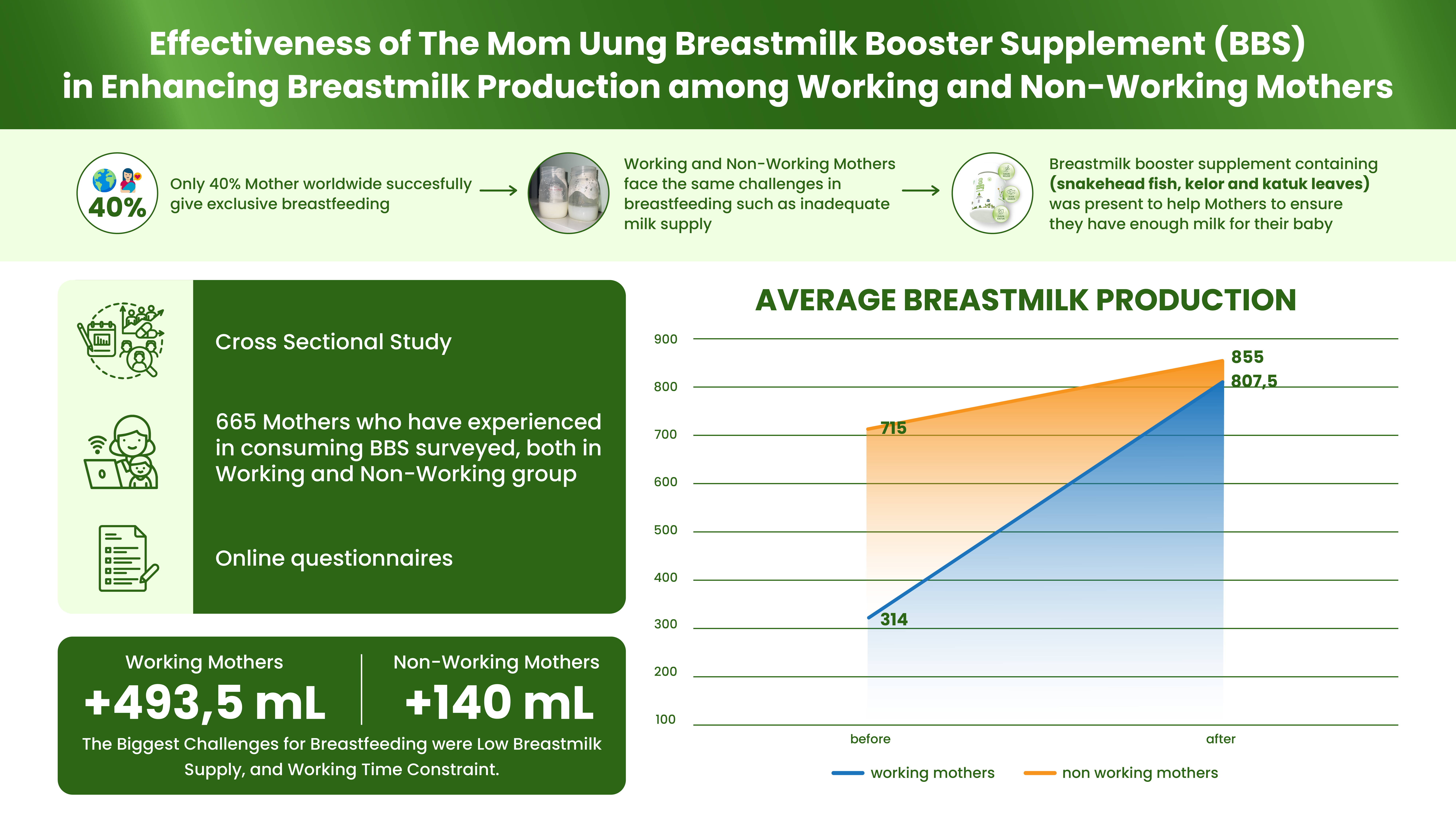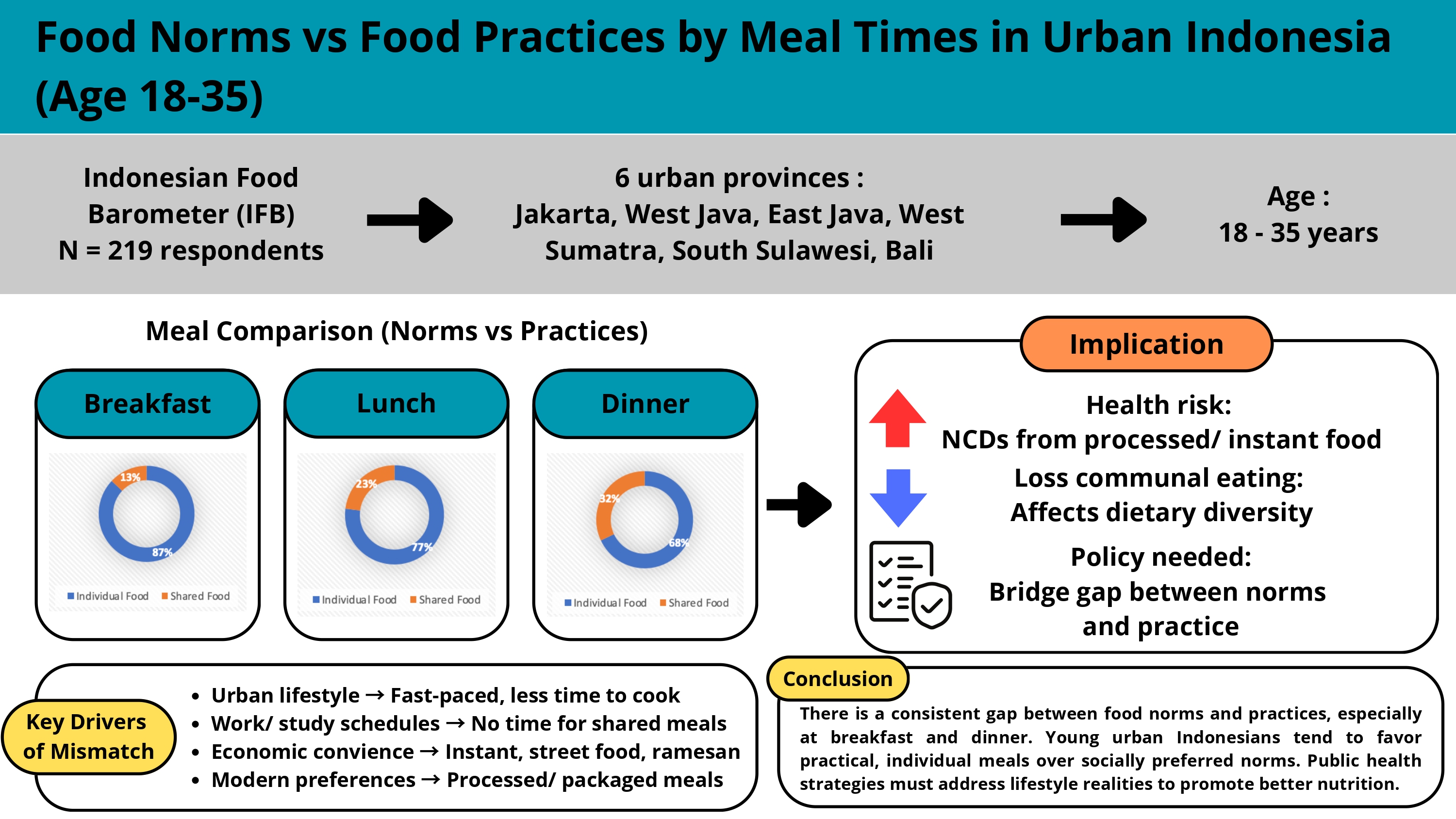SMART CLASS INNOVATION USING TES DUGA TO ACCELERATE STUNTING PREVENTION IN AGRICULTURAL AREAS

Downloads
Breaking the chain of stunting by increasing parental understanding is necessary. This study aims to analyze the effectiveness of the Smart Class innovation using the 'Tes Duga' Snakes and Ladders game in improving parental knowledge to accelerate stunting prevention and reduction in agricultural areas. This study employed a pre-experimental one-group pre-test-post-test design. This study used a sample of 107 parents who have toddlers. Data collection was carried out using a questionnaire. The data obtained were analyzed using the Wilcoxon signed-rank test. The analysis indicated a statistically significant improvement in parental knowledge and attitudes, with a p-value of 0.000 (p < 0.05). These results show that the innovation of the Smart Class Program through the Guess Test game effectively increases parents' knowledge about preventing and reducing stunting. As an educational method, the Smart Class Program has the advantages of being interactive and fun for learning parents in agronursing areas, preventing stunting, and having an average increase in parental knowledge before the intervention of 73.36. After the intervention, the average increased significantly, namely 87.01. This innovative approach has the potential to be applied more widely as part of national efforts to overcome the problem of stunting in Indonesia.
Alim, K. Y., Rosidi, A., & Suhartono, S. (2019). Birth length, maternal height and pesticide exposure were predictors of child stunting in agricultural area. Jurnal Gizi dan Dietetik Indonesia (Indonesian Journal of Nutrition and Dietetics), 6(3), 89. https://doi.org/10.21927/ijnd.2018.6(3).89-98
Aprilina, H. D., Nurkhasanah, S., & Hisbulloh, L. (2021). Mother’s nutritional knowledge and behavior to stunting prevalence among children under two years old: case-control. Bali Medical Journal, 10(3 Special Issue), 1211–1215. https://doi.org/10.15562/bmj.v10i3.2868
Badan Pusat Statistik Lumajang. (2016). Statistik Daerah Lumajang 2017 (Nomor 0). Badan Pusat Statistik Kabupaten Lumajang.
Creswell, J. W., & Creswell, J. D. (2018). Research Design : Qualitative, Quantitative, and Mixed Methods Approaches (5th edn). SAGE Publications, Inc.
Hall, C., Bennett, C., Crookston, B., Dearden, K., Hasan, M., Linehan, M., Syafiq, A., West, S., & West, J. (2018). Maternal Knowledge of Stunting in Rural Indonesia. International Journal of Child Health and Nutrition, 7(4), 139–145. https://doi.org/10.6000/1929-4247.2018.07.04.2
Kartini, A., Subagio, H. W., Hadisaputro, S., Kartasurya, M. I., Suhartono, S., & Budiyono, B. (2019). Pesticide exposure and stunting among children in agricultural areas. International Journal of Occupational and Environmental Medicine, 10(1), 17–29. https://doi.org/10.15171/IJOEM.2019.1428
Livana, P.H;, Hermanto, H., & Pranita, P. (2019). KARAKTERISTIK ORANG TUA DAN PERKEMBANGAN PSIKOSOSIAL INFANT. Jurnal Kesehatan, 12(1), 1–13. https://doi.org/10.24252/kesehatan.v12i1.6669
Maisyaroh, A. (2019). BUKU AJAR AGRONURSING. KHD Production.
Mulyaningsih, T., Mohanty, I., Widyaningsih, V., Gebremedhin, T. A., Miranti, R., & Wiyono, V. H. (2021). Beyond personal factors: Multilevel determinants of childhood stunting in Indonesia. PLoS ONE, 16(11 November), 1–19. https://doi.org/10.1371/journal.pone.0260265
Musviro, Hayati, N., & Wahyuningsih, S. (2024). Innovation of Moringa Based Food Processing as An Effort to Prevent Stunting. AgroNurse Kesehatan (Jurnal Pengabdian Masyarakat, 122–126.
Nengsih, N. A., Sudirman, R. M., & Khamaludin, K. (2023). Peran Perawat Educator Dan Motivator Pada Balita Stunting Di Kabupaten Kuningan Tahun 2023. National Nursing Conference, 1(2), 138–150. https://doi.org/10.34305/nnc.v1i2.867
Pambudi Karuniawaty, T., Silvana Sari, L., Wiweko, A., & Karmila, I. (2020). Implementation of Educative Boardgame to Improve Knowledge, Attitude and Practice of Complementary Feeding in Stunting Locus at Central Lombok. American Journal of Pediatrics, 6(3), 172. https://doi.org/10.11648/j.ajp.20200603.12
Rachman, R. Y., Nanda, S. A., Larassasti, N. P. A., Rachsanzani, M., & Amalia, R. (2021). Hubungan Pendidikan Orang Tua Terhadap Risiko Stunting Pada Balita: a Systematic Review. Jurnal Kesehatan Tambusai, 2(2), 61–70. https://doi.org/10.31004/jkt.v2i2.1790
Sharifzadeh, N., Kharrazi, H., Nazari, E., Tabesh, H., Khodabandeh, M. E., Heidari, S., & Tara, M. (2020). Health education serious games targeting health care providers, patients, and public health users: Scoping review. JMIR Serious Games, 8(1), 1–16. https://doi.org/10.2196/13459
Sofiyetti, Mustafa, Restuning, S., Nurmawi, Y., Muliani, Dwisetyo, B., Nuradji, S., Razi, P., Lewa, A. F., Christine, Utami, U., Nadirawat, Riu, S. D. M., & Robert, D. (2023). BUNGA RAMPAI STATISTIK KESEHATAN. Pena Persada Kerta Utama.
Starkweather, C., Guarino, A., Bennion, N., Cottam, M., McGhie, J., Dearden, K. A., Santika, O., Jusril, H., Hall, C., Crookston, B. T., Linehan, M., Torres, S., Bennett, C., & West, J. H. (2020). An interpersonal nutrition campaign and maternal knowledge and childhood feeding practices: A case study from mothers in rural Indonesia. Archives of Public Health, 78(1), 1–6. https://doi.org/10.1186/s13690-020-00444-9
Susanto, T., Rasni, H., & Susumaningrum, L. A. (2021). Prevalence of malnutrition and stunting among under-five children: A cross-sectional study family of quality of life in agricultural areas of Indonesia. Mediterranean Journal of Nutrition and Metabolism, 14, 147–161. https://doi.org/10.3233/MNM-200492
UNICEF, WHO, & WORLD BANK. (2023). Level and trend in child malnutrition. In World Health Organization. New York. https://www.who.int/publications/i/item/9789240073791
Wahyuningsih, S., Musviro, M., Hayati, N., & Susanti, I. A. (2024). The Success of Empowering Cadres in The Prevention of Acute Hepatitis Among Children in Agronursing Areas. Healthcare in Low-Resource Settings, 12(1), 21–24. https://doi.org/10.4081/hls.2024.11771
World Health Organisation. (2015). Stunting in a nutshell. https://www.who.int/news/item/19-11-2015-stunting-in-a-nutshell

This work is licensed under a Creative Commons Attribution-NonCommercial-ShareAlike 4.0 International License.
- MEDIA GIZI INDONESIA Journal is the copyright owner of all materials published on this website.
- The formal legal provisions for access to digital articles of this electronic journal are subject to the terms of the Creative Commons Attribution-NonCommercial-ShareAlike license (CC BY-NC-SA 4.0), which means that MEDIA GIZI INDONESIA Journal and readers reserve the right to save, transmit media / format, manage in database, maintain, and publish articles as long as it continues to include the name of the Author.
- Printed and published print and electronic manuscripts are open access for educational, research and library purposes. In addition to these objectives, the editorial board shall not be liable for violations of copyright law.


2.png)





















